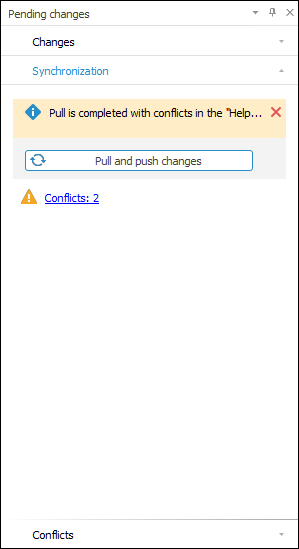Make sure that objects are added to version control system.
Check object changes in the latest version if required.
Select objects in the object navigator or project navigator in the development environment.
Execute one of the operations:
Click the
 Latest Version button on the object navigator ribbon or in the project navigator menu of the development environment.
Latest Version button on the object navigator ribbon or in the project navigator menu of the development environment.Select the
 Get Latest Version item in the object's context menu.
Get Latest Version item in the object's context menu.


